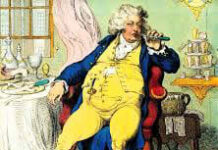Sonnet | Sonnet as a Form of Lyrical Poetry
Sonnet | Sonnet as a Form of Lyrical Poetry
The Sonnet is a form of lyrical poetry on a single theme composed of fourteen lines in iambic pentameter with a varied rhyme scheme.
The word ‘Sonnet’ has been derived from the Italian word ‘sonnetto’ which means ‘a little strain’. The sonnet as a form of lyrical poetry came into being in Italy in the thirteenth century and Alighieri Dante (1265-1321) is said to be the originator of this form of lyric. He used this form of lyric in his famous poetry book entitled Divine Comedy which is a sequence of sonnets in praise of his beloved Beatrice. But it was Petrarch (1304-1374), another Italian poet, who gave it a definite form and established it as a special form of lyrics. He wrote a sequence of sonnets expressing his idealized love for his beloved Laura. The sonnet of Petrarch falls into two parts of eight and six lines respectively. The first eight lines are called Octave which expresses the flow of a thought or feeling and the remaining six lines are called Sestet which expresses the ebb of the thought. The rhyme scheme of his sonnet is abbaabba in the octave and cde, cde or cdc, cdc in the sestet. This form of sonnet used by Petrarch is called the Petrarchan or Italian Form of Sonnet.
The sonnet as a special form of lyric was imported to England by Sir Thomas Wyatt and Henry Howard (Earl of Surry) in the sixteenth century. They being politicians had to frequent Italy on some diplomatic mission and there being fascinated and inspired by this form of lyric, Sir Thomas Wyatt wrote some sonnets in English imitating Petrarch. It was the beginning and since this beginning, many English poets take to practice this form of lyrics. The Elizabethan Age is the heyday of the output of sonnets. Besides Sir Thomas Wyatt and Henry Howard, the other Elizabethan sonneteers were William Shakespeare, Sir Philip Sidney, Edmund Spencer, Samuel Daniel, Michael Drayton and a few others. Among the Elizabethan sonneteers, Shakespeare is the greatest. He wrote a sequence of 154 sonnets on a variety of themes such as love, marriage, the savage of time, beauty, the mutability of human life and so on. He wrote the sonnets in praise of his patron who is supposed to be the then Earl of Southampton and a lady who is metaphorically called “Dark Lady”. Poetically his sonnets are superior to that of his contemporaries. Shakespeare though wrote sonnets inspired by his predecessors, he gave a new form and spirit. His sonnets consist of three stanzas each comprises of four lines followed by a couplet. The rhyme schemes of his sonnets are- abab, cdcd, efef, and gg. The form introduced and practiced by Shakespeare is called the Shakespearean or English Form of Sonnets.
After the Elizabethan poets, some other poets also wrote sonnets on a variety of themes as love, death, nature, social corruption, friendship, the mutability of life and so on.
Though sonnets of various sonneteers differ something from one another both in theme and style yet there are some features that are traced to be common to all, they are- (1) a single theme dealing especially with love, (2) comprises of fourteen lines, usually though not always, in iambic pentameter, (3) subjectivity, (4) sincerity and spontaneity, (5) reflectiveness and (6) varied rhyme schemes. 0 0 0.
N. B. The article originally belongs to the book entitled ‘ The Laws of Literature‘ by Menonim Menonimus
Books on Literary Criticism by M. Menonimus:
- World Short Story Criticism
- World Poetry Criticism
- World Drama Criticism
- World Novel Criticism
- World Essay Criticism
- Indian English Poetry Criticism
- Indian English Poets and Poetry Chief Features
- Emily Dickinson’s Poetry-A Thematic Study
- Walt Whitman’s Poetry-A Thematic Study
- Critical Essays on English Poetry
- Tawfiq al-Hakim’s Novel: Return of the Spirit-An Analytical Study
- Tawfiq al-Hakim’s Novel: ‘Yawmiyyat Naib Fil Arayaf’-An Analytical Study
- Analytical Studies of Some Arabic Short Stories
- A Brief History of Arabic Literature: Pre-Islamic Period (500 AD-622 AD)
- A Brief History of Arabic Literature: Early Islamic Period (622 AD-661 AD) …
Related Search:
- Sonnet
- Sonnet Characteristics
- Petrarchan Sonnet
- Shakespearean Sonnet











